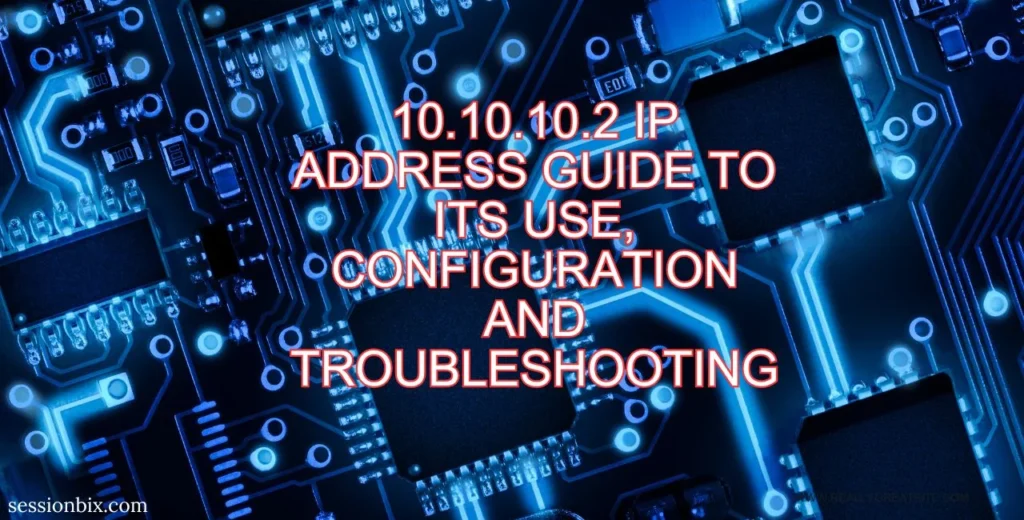In the realm of networking, 10.10.10.2 IP addresses are essential components that enable the functioning of various systems and devices. One such IP address that holds significant importance. This article delves deeply into the specifics of the 10.10.10.2 IP address, exploring its uses, configurations, and benefits. Our objective is to provide a comprehensive guide that will not only enhance your understanding but also aid in optimizing your network management.
Introduction to Private IP Addresses
Private IP addresses are designated for use within private networks and are not routable on the public internet. They are part of the IPv4 address space defined by the Internet Assigned Numbers Authority (IANA). The most common ranges of private IP addresses are:
- 10.0.0.0 to 10.255.255.255
- 172.16.0.0 to 172.31.255.255
- 192.168.0.0 to 192.168.255.255
The 10.10.10.2 IP address falls within the 10.0.0.0/8 range, making it a private IP address that is widely used in local area networks (LANs).
What is 10.10.10.2?
The IP address 10.10.10.2 is a private IP address belonging to the range defined by the Internet Assigned Numbers Authority (IANA) for use within private networks. This range, 10.0.0.0 to 10.255.255.255, is specifically reserved for internal network usage and is not routable on the public internet. This can be freely used within local area networks (LANs) without risk of conflict with public IP addresses.
Read Also: María Bernarda Giménez | Springhillmedgroup com | Isac Hallberg The Inspiring Journey Early Life and Personal Details
10.10.10.2 Used as
Network Segmentation
10.10.10.2 is commonly used to segment and manage network traffic efficiently. Assigning this IP to a specific device or group of devices helps in organizing the network.
Device Identification
Within a private network, this can be assigned to a critical device such as a server or a network printer. This static assignment ensures that the device is easily identifiable and locatable.
Home and Corporate Networks
In home networks, 10.10.10.2 might be used for personal computers or smart home devices, while in corporate settings, it could be assigned to servers, routers, or other network infrastructure components.
Read Also: 10.24.0.157 IP Address | 111.9 IP Address | 45.76.33.4 IP Address
Track Location by IP Address 10.24.0.157
The IP address 10.24.0.157 is another private IP address, falling within the 10.0.0.0/8 range. Unlike public IP addresses, private IPs like 10.24.0.157 cannot be used to track geographical locations directly through standard IP geolocation services. Their primary function is within the confines of a private network, making it impossible to determine their physical location without access to internal network information.
10.10.10.2: Public or Private IP Address
10.10.10.2 is unequivocally a private IP address. Private IP addresses are intended for use within private networks and are not routable on the public internet. This categorization is part of the IPv4 standard, which also includes other private IP ranges such as 172.16.0.0 to 172.31.255.255 and 192.168.0.0 to 192.168.255.255. The primary advantage of using private IP addresses is the ability to freely use them within internal networks without the need for coordination with external entities.
Read Also: 10.10.0.1 Private IP Address | 172.16.50.4 IP Address: A Comprehensive Guide
About its Internet Service Provider
Private IP addresses like 10.10.10.2 do not have a direct Internet Service Provider (ISP) because they are used within internal networks. The ISP is responsible for providing the public IP address that your network uses to connect to the internet. The assignment and management of private IP addresses like 10.10 10.2 are typically handled by the network administrator of the organization or home network.
What is Reverse DNS Lookup of 10.10.10.2?
A reverse DNS lookup is a process where the DNS system is queried to resolve an IP address back to a hostname. For private IP addresses like 10.10.10.2, a reverse DNS lookup would only be meaningful within the context of the internal network. In most private networks, administrators configure reverse DNS entries in their DNS servers to map IP addresses to meaningful hostnames for easier management.
The Significance of 10.10.10.2
The 10.10.10.2 IP address is often employed in network configurations, particularly within corporate environments and home networks. Its primary function is to serve as an internal IP address assigned to devices such as computers, printers, or routers within a private network. Here are some key points highlighting its significance:
- Network Segmentation: The 10.10.10.2 IP address is used to segment networks, allowing for efficient traffic management and enhanced security.
- Ease of Management: Assigning static IP addresses like 10.10.10.2 to critical devices ensures ease of management and troubleshooting.
- Device Identification: It aids in the identification and addressing of devices within a network, ensuring seamless communication.
Read Also: Unveiling The Bart Springtime And Diana Nyad’s Journey | 127.0.0.1:49342 A Guide for IP Address And Network Troubleshooting
Configuring The 10.10.10.2 IP Address
To utilize this numbers within your network, proper configuration is crucial. The following steps outline the process for setting up this IP address on a device:
Step 1: Access Network Settings: Access the network settings of the device you wish to configure. This can typically be done via the control panel or system preferences, depending on the operating system.
Step 2: Assign the IP Address: Navigate to the IP settings section and manually assign 10.10.10.2 as the static IP address. Ensure that the subnet mask is set appropriately, usually 255.255.255.0 for standard configurations.
Step 3: Configure the Gateway and DNS: Set the default gateway and DNS servers. For instance, if your router’s IP is 10.10.10.1, use it as the default gateway. Configure the DNS settings as per your network requirements or use public DNS servers like 8.8.8.8 (Google DNS).
Step 4: Save and Restart: Save the changes and restart the device to ensure the new IP settings take effect.
Common Use Cases for 10.10.10.2
The 10.10.10.2 IP address is versatile and finds application in various scenarios. Some common use cases include:
1. Home Networks: In home networks, It can be assigned to devices such as smart TVs, home automation systems, and personal computers. This ensures a structured network setup where each device has a unique and identifiable IP address.
2. Corporate Networks: In corporate environments, it can be designated to critical infrastructure components such as servers, network printers, and security cameras. This facilitates network administration and enhances security protocols.
3. Educational Institutions: Schools and universities often use structured IP addressing schemes for efficient network management. it could be used for administrative computers or lab equipment, ensuring they are easily locatable and manageable.
Read Also: Pirate Proxy 2024 | 76ers vs Knicks Match Player Stats
Security Considerations
While it is a private IP address and inherently more secure from external threats, it is essential to implement additional security measures within your network:
- Firewalls: Ensure that firewalls are configured to protect against unauthorized access.
- Encryption: Use encryption protocols for data transmission within the network.
- Regular Updates: Keep all network devices and software updated to protect against vulnerabilities.
- Access Controls: Implement strict access controls to limit who can access the network and its resources.
Read Also: Pacers vs Milwaukee Bucks Match Player Stats | Bandera Roja (clima propicio para incendios)
Troubleshooting Issues with 10.10.10.2
Even with proper configuration, issues may arise with the 10.10.10.2 IP address. Here are some common troubleshooting steps:
1. Connectivity Problems: Ensure that the device is physically connected to the network. Check cables and Wi-Fi connections.
2. IP Conflicts: If another device is already using 10.10.10.2, an IP conflict will occur. Verify and resolve IP conflicts by checking the IP addresses assigned to all devices within the network.
3. Incorrect Settings: Double-check the subnet mask, gateway, and DNS settings. Incorrect configurations can lead to connectivity issues.
4. Network Interference: Look for potential sources of network interference, such as other electronic devices or overlapping Wi-Fi channels.
Conclusion
The 10.10.10.2 IP address is a fundamental component in private networking, offering versatility and ease of management for both simple and complex network environments. Terms of network management, device identification, and security. Understanding its role, configuration, and applications can greatly enhance the efficiency and reliability of your network. By understanding its configuration, applications, and security implications, you can optimize your network for better performance and reliability.



